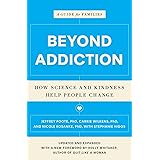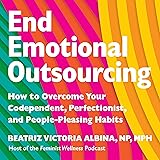Have you ever considered the profound ways digital dependence might be impacting your daily existence? As clinical psychologist Elif T. Çolakoğlu articulates in the accompanying video, internet addiction can significantly diminish a person’s functional capacity and overall well-being. This phenomenon, often referred to as Problematic Internet Use or Internet Use Disorder, transcends mere heavy usage, manifesting as a compulsive engagement with online activities despite adverse consequences.
Firstly, identifying the core symptoms is paramount for accurate assessment and intervention. Understanding these indicators offers a critical framework for recognizing when digital habits shift from utility to pathology. The pervasive nature of the internet necessitates a nuanced approach to differentiate between enthusiastic engagement and genuine behavioral addiction. It is not the amount of time online alone, but the impairment caused by that time, which defines the disorder.
Understanding the Clinical Symptoms of Internet Addiction
The constellation of symptoms associated with internet addiction is multifaceted, affecting various domains of life. These symptoms are not isolated occurrences; instead, they often form a pattern that progressively erodes an individual’s capacity for healthy functioning. Recognizing these signs early can facilitate timely support and intervention strategies. The criteria for diagnosis typically involve a persistent and recurrent use of the internet leading to clinically significant impairment or distress.
1. Decline in Academic and Professional Performance
A notable red flag for internet addiction is a marked decrease in an individual’s academic or occupational efficacy. Students might experience dwindling grades, missed assignments, or a general disinterest in their studies, preferring online pursuits. For professionals, this could translate to reduced productivity, neglected responsibilities, frequent tardiness, or even job loss. The compelling pull of online activities often overrides the importance of real-world commitments, creating a vicious cycle of underachievement and increased online escape.
2. Deterioration of Social and Family Relationships
Secondly, the impact on interpersonal connections is often profound and devastating. Individuals struggling with problematic internet use frequently withdraw from face-to-face interactions, opting for virtual communication or solitary online activities. This can lead to strained family dynamics, neglected friendships, and social isolation, exacerbating feelings of loneliness or misunderstanding. The preference for idealized online personas or communities over complex real-world relationships becomes a dominant behavioral pattern.
3. Significant Sleep Disturbances
Sleep architecture is commonly disrupted by excessive internet engagement, particularly late into the night. The blue light emitted from screens can interfere with melatonin production, delaying the onset of sleep and disrupting circadian rhythms. Individuals often stay online far beyond their intended bedtime, resulting in chronic sleep deprivation, fatigue, and impaired cognitive function during the day. This symptom is frequently cited by patients as a primary driver for seeking help.
4. Negligence of Self-Care and Personal Hygiene
Moreover, a discernible neglect of personal hygiene and basic self-care responsibilities can indicate a deeper issue. This might involve skipping meals, poor personal grooming, or neglecting physical health needs in favor of remaining online. The allure of the digital world can become so encompassing that fundamental biological and social needs are overlooked. This symptom is a tangible manifestation of how deeply engrossing and absorbing internet addiction can become.
5. Deception and Secrecy Regarding Internet Use
A hallmark characteristic of behavioral addictions, including problematic internet use, is the tendency towards dishonesty. Individuals may lie to family members, friends, or employers about the extent and nature of their online activities. This secrecy is often fueled by shame, guilt, or a desire to avoid confrontation, further isolating the individual. The persistent concealment of online habits highlights a loss of control and a significant psychological burden.
6. Experiencing Withdrawal Symptoms Offline
Finally, a critical symptom involves experiencing psychological distress when internet access is unavailable or restricted. This can manifest as irritability, anxiety, restlessness, or a pervasive sense of unease. These withdrawal-like symptoms underscore the physiological and psychological dependence that has developed. The mere thought of being disconnected can provoke significant distress, revealing the extent of an individual’s attachment to their digital environment.
Expanding on the Neurobiological and Psychological Underpinnings
The progression towards internet addiction is not merely a matter of willpower; it involves complex neurobiological and psychological mechanisms. Research indicates that excessive online engagement can trigger dopamine release in the brain’s reward pathways, similar to substance addictions. This neurochemical process reinforces the compulsive behavior, making it increasingly difficult to disengage without professional support. The brain learns to associate online activities with pleasurable sensations, creating a powerful feedback loop.
For instance, the immediate gratification offered by social media notifications or gaming achievements can hijack the brain’s reward system. This constant stream of positive reinforcement can lead to a desensitization, requiring increasingly more time online to achieve the same level of satisfaction. Consequently, offline activities, which might offer delayed gratification, become less appealing. This neurological reprogramming contributes significantly to the persistent and recurrent nature of the disorder.
Furthermore, psychological factors such as underlying anxiety, depression, or social phobia often contribute to the development of internet addiction. The internet can serve as a maladaptive coping mechanism, providing an escape from real-world problems or uncomfortable emotions. For example, an individual struggling with social anxiety might find solace in online interactions where they feel less exposed or judged. This avoidance, however, prevents them from developing essential coping skills for face-to-face situations, perpetuating the cycle of reliance on digital environments.
The Path Forward: Addressing Problematic Internet Use
Recognizing the symptoms is the crucial first step toward managing internet addiction. Intervention often requires a multi-pronged approach, integrating therapeutic strategies with lifestyle adjustments. Cognitive Behavioral Therapy (CBT) has shown efficacy in helping individuals identify and modify maladaptive thought patterns and behaviors associated with excessive internet use. This involves setting realistic goals, developing alternative coping strategies, and slowly reducing screen time.
For example, a therapeutic plan might include establishing “tech-free” zones or times within the home, or scheduling specific periods for online activities. Developing new hobbies and re-engaging with neglected social activities are also vital components of recovery. In some cases, medication might be considered to address co-occurring mental health conditions like anxiety or depression, which can fuel internet dependence. Collaborative efforts between mental health professionals, family members, and individuals are often essential for successful outcomes in mitigating the effects of problematic internet use.











